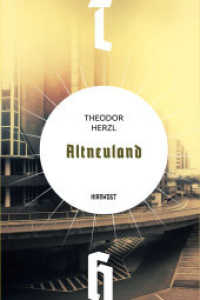Full Description
The 6-volume set, comprising the LNCS books 12535 until 12540, constitutes the refereed proceedings of 28 out of the 45 workshops held at the 16th European Conference on Computer Vision, ECCV 2020. The conference was planned to take place in Glasgow, UK, during August 23-28, 2020, but changed to a virtual format due to the COVID-19 pandemic.
The 249 full papers, 18 short papers, and 21 further contributions included in the workshop proceedings were carefully reviewed and selected from a total of 467 submissions. The papers deal with diverse computer vision topics.
Part I focusses on adversarial robustness in the real world; bioimage computation; egocentric perception, interaction and computing; eye gaze in VR, AR, and in the wild; TASK-CV workshop and VisDA challenge; and bodily expressed emotion understanding.
Contents
W01 - Adversarial Robustness in the Real World.- A Deep Dive into Adversarial Robustness in Zero-Shot Learning.- Towards Analyzing Semantic Robustness of Deep Neural Networks.- Likelihood Landscapes: A Unifying Principle Behind Many Adversarial Defenses.- Deep k-NN Defense Against Clean-label Data Poisoning Attacks.- Ramifications of Approximate Posterior Inference for Bayesian Deep Learning in Adversarial and Out-of-Distribution Settings.- Adversarial Shape Perturbations on 3D Point Clouds.- Jacks of All Trades, Masters Of None: Addressing Distributional Shift and Obtrusiveness via Transparent Patch Attacks.- Evaluating Input Perturbation Methods for Interpreting CNNs and Saliency Map Comparison.- Adversarial Robustness of Open-set Recognition: Face Recognition and Person Re-identification.- WaveTransform: Crafting Adversarial Examples via Input Decomposition.- Robust Super-Resolution of Real Faces using Smooth Features.- Improved Robustness to Open Set Inputs via Tempered Mixup.- Defenses Against Multi-Sticker Physical Domain Attacks on Classifiers.- Adversarial Attack on Deepfake Detection using RL based Texture Patches.- W02 - BioImage Computation.- A Subpixel Residual U-Net and Feature Fusion Preprocessing for Retinal Vessel Segmentation.- Attention Deeplabv3+: Multi-level Context Attention Mechanism for Skin Lesion Segmentation.- Automated Assessment of the Curliness of Collagen Fiber in Breast Cancer.- Bionic Tracking: Using Eye Tracking to Track Biological Cells in Virtual Reality.- Cardiac MR Image Sequence Segmentation with Temporal Motion Encoding.- Classifying Nuclei Shape Heterogeneity in Breast Tumors with Skeletons.- DenoiSeg: Joint Denoising and Segmentation.- DoubleU-Net: Colorectal Cancer Diagnosis and Gland Instance Segmentation with Text-Guided Feature Control.- Dynamic Image for 3D MRI Image Alzheimer's Disease Classification.- Feedback Attention for Cell Image Segmentation.- Improving Blind Spot Denoising for Microscopy.- Learning toRestore ssTEM Images from Deformation and Corruption.- Learning to Segment Microscopy Images with Lazy Labels.- Multi-CryoGAN: Reconstruction of Continuous Conformations in Cryo-EM Using Generative Adversarial Networks.- Probabilistic Deep Learning for Instance Segmentation.- Registration of Multi-modal Volumetric Images by Establishing Cell Correspondence.- W2S: Microscopy Data with Joint Denoising and Super-Resolution for Wide field to SIM Mapping.- W03 - Egocentric Perception, Interaction and Computing.- An investigation of Deep Visual Architectures based on Preprocess Using the Retinal Transform.- Data Augmentation Techniques for the Video Question Answering Task.- W05 - Eye Gaze in VR, AR, and in the Wild.- Efficiency in Real-time Webcam Gaze Tracking.- Hierarchical HMM for Eye Movement Classification.- Domain Adaptation for Eye Segmentation.- EyeSeg: Fast and Efficient Few-Shot Semantic Segmentation.- W10 - TASK-CV Workshop and VisDA Challenge.- Class-imbalanced Domain Adaptation: An Empirical Odyssey.- Sequential Learning for Domain Generalization.- Generating Visual and Semantic Explanations with Multi-task Network.- SpotPatch: Parameter-Efficient Transfer Learning for Mobile Object Detection.- Using Sentences as Semantic Representations in Large Scale Zero-Shot Learning.- Adversarial Transfer of Camera Pose Regression.- Disentangled Image Generation for Unsupervised Domain Adaptation.- Domain Generalization using Shape Representation.- Bi-Dimensional Feature Alignment for Cross-Domain Object Detection.- Bayesian Zero-Shot Learning.- Self-Supervision for 3D Real-World Challenges.- Diversified Mutual Metric Learning.- Domain Generalization vs Data Augmentation: an Unbiased Perspective.- W11 - Bodily Expressed Emotion Understanding.- Panel: Bodily Expressed Emotion Understanding Research: A Multidisciplinary Perspective.- Emotion Understanding in Videos Through Body, Context, and Visual-Semantic Embedding Loss.- Noisy Student Training using Body Language Dataset Improves Facial Expression Recognition.- Emotion Embedded Pose Generation.- Understanding Political Communication Styles in Televised Debates via Body Movements.








